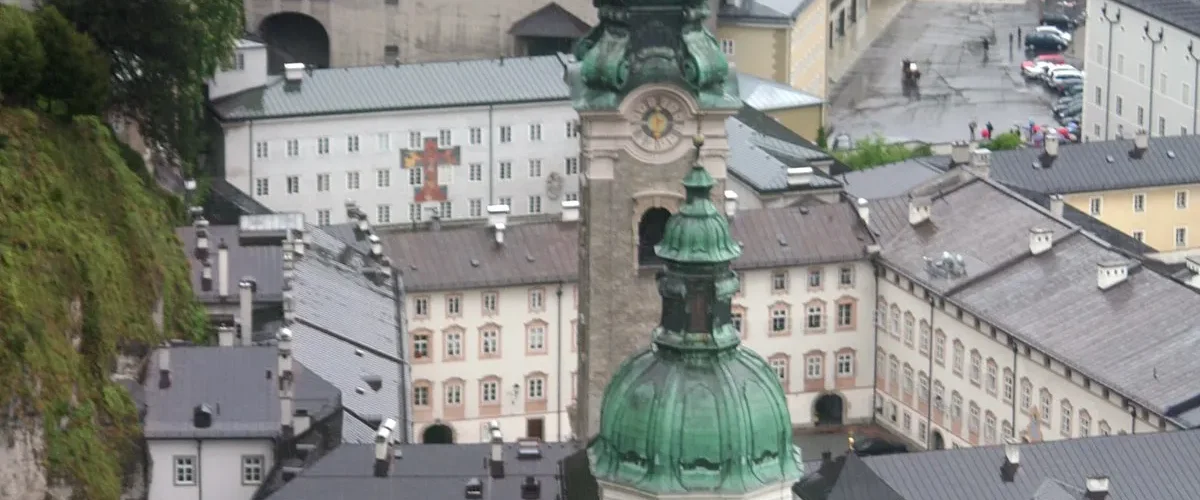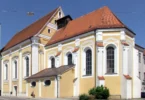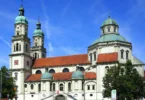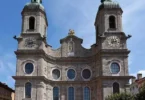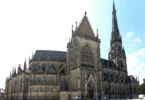Introduction
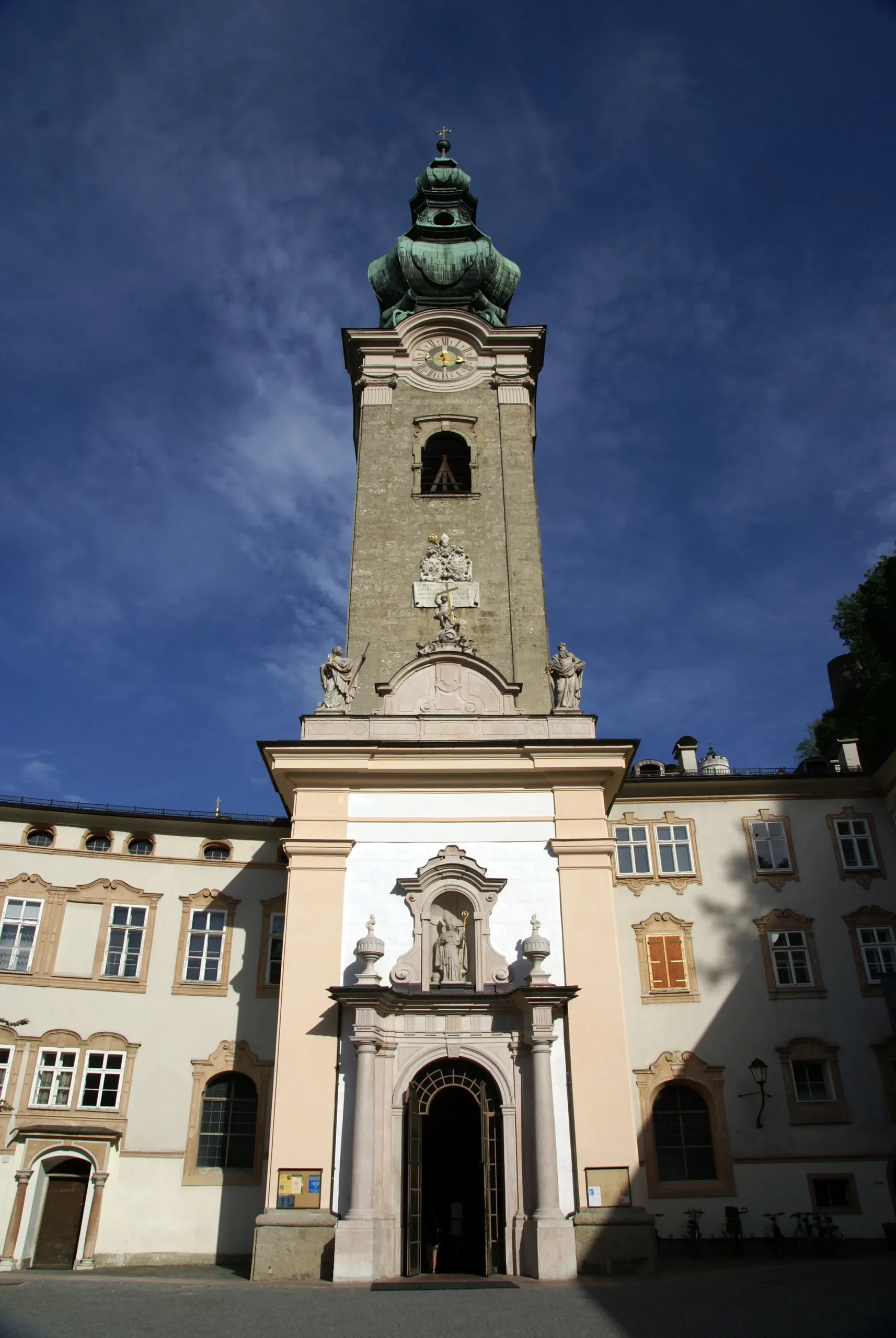
St Peter’s Abbey (German: Stift Sankt Peter), or St Peter’s Archabbey (German: Erzabtei Stift Sankt Peter, Latin: Archiabbatia sancti Petri Salisburgensis), is a Benedictine monastery and former cathedral in the Austrian city of Salzburg. It is considered one of the oldest monasteries in the German-speaking area, and in fact the oldest with a continuous history since its foundation in 696. St. Peter’s was founded in the 7th century, the church and abbey have been the spiritual heart of the city of Salzburg.
It is set at the foot of the Mönchsberg mountains and built in the Romanesque style of architecture in 1130. It is built at the site of a previous Carolingian church building, and was dedicated to Saint Peter in 1147. Onion domes are very popular in Austria. . The onion dome on the steeple was added in 8th century.
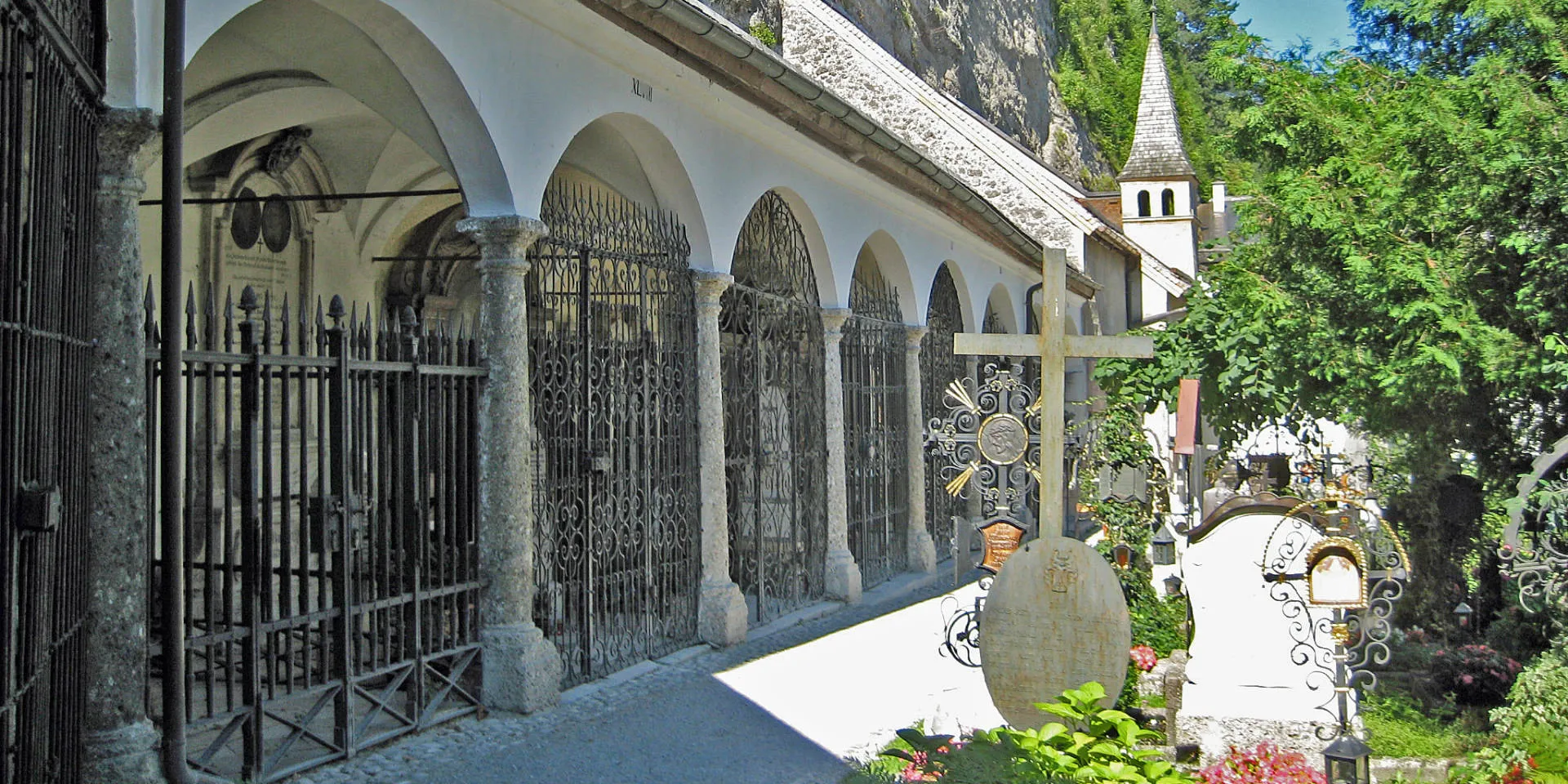
St Peter’s Abbey was founded in 696 by Saint Rupert at the site of a Late Antique church stemming from the first Christianization in the area in the days of Severinus of Noricum. Likewise the establishment of the monastery was meant to advance missionary efforts in the Eastern Alps. Until 987, the office of the abbot was joined to that of the Archbishop of Salzburg: one man fulfilled both duties.
In the Middle Ages, St Peter’s was known for its exceptional school. In 1074, Archbishop Gebhard of Salzburg sent several monks to found Admont Abbey in the March of Styria. In the 15th century, the abbey adopted the Melk Reforms. A pipe organ was built at the abbey by Daniel Hayl the younger in the years 1618 through 1620. In 1623, Archbishop Paris Lodron founded the Benedictine University of Salzburg, which until its dissolution in 1810 was closely connected to the abbey.
Since 1641, the abbey has been a member of the Salzburg Congregation, merged in 1930 into the present Austrian Congregation (of which it is the principal house) of the Benedictine Confederation.
In 1926, endeavours for re-establishing the Salzburg university led to the foundation of the Benedictine college (Kolleg St. Benedikt); the initiative helped bring the modern University of Salzburg back into being. In 1927, St Peter’s was raised to the status of an archabbey. Following the Austrian Anschluss to Nazi Germany in 1938, the premises were seized and most of the monks expelled. Nevertheless, the monastery was not dissolved and the monks returned after the war.
The present-day Romanesque abbey church at the northern foot of the Mönchsberg was erected from about 1130 onwards at the site of a previous Carolingian church building, it was dedicated to Saint Peter in 1147. One of the organs was located atop the rood screen in 1444, a work by Heinrich Traxdorf of Mainz. While the steeple received its onion dome in 1756, the interior was often re-modelled before attaining its currently visible Rococo style between 1760 and 1782 under Abbot Beda Seeauer’s direction. The high altar is a work by Martin Johann Schmidt. The St. Mary’s Chapel contains the grave of Abbot Johann von Staupitz (d. 1524), who was Martin Luther’s superior; they were both Augustinian monks in Germany at the time.
Mozart’s Great Mass in C minor was scheduled to premiere in the church, probably on 26 October 1783, with his wife Constanze singing first soprano. However, the work remained incomplete. Next to the altar where St. Rupert was originally entombed lie the tombs of Mozart’s sister Maria Anna Mozart (Nannerl) and Johann Michael Haydn. Also entombed at St. Peter’s Abbey is St. Vitalis.
Archabbey St. Peter is the oldest monastery in the German-speaking area. It was founded in 696 by Bishop Rupert of Worms as a monastery with the purpose of proselytizing the area. St. Peter’s abbey church (colloquially known as “Peter’s church”) is the oldest bishopric church of the Salzburg archdiocese. Archeological finds beneath the altar of the church indicate that even earlier, a church must have existed in the same spot. Until 1110, St. Peter’s Abbey was the residence of Salzburg’s archbishop.
During the Middle Ages, St. Peter’s Abbey was known for its outstanding scriptorium and writing school. Additionally, it is the mother monastery of the Benedictine Abbey Admont in Styria.
In 1622, Archbishop Paris von Lodron ordered the construction of the Benedictine University of Salzburg, which was strongly connected to the abbey until its dissolution in 1810. Abbot Petrus Klotz’s strong calls for a catholic university lead to the foundation of the St. Benedict’s College in 1926, which was the groundwork for the later University of Salzburg. This successful endeavor was honored by promoting the abbey to an archabbey.
During National Socialism, the monks were driven away but the monastery was not disbanded. Thus, the monks returned to the abbey after the war.
The abbey’s buildings suffered from multiple fires throughout its history and was repaired and reconstructed several times during different eras. Today, the complex features elements of the Romanesque and Gothic period, the Renaissance, Baroque and Rococo!
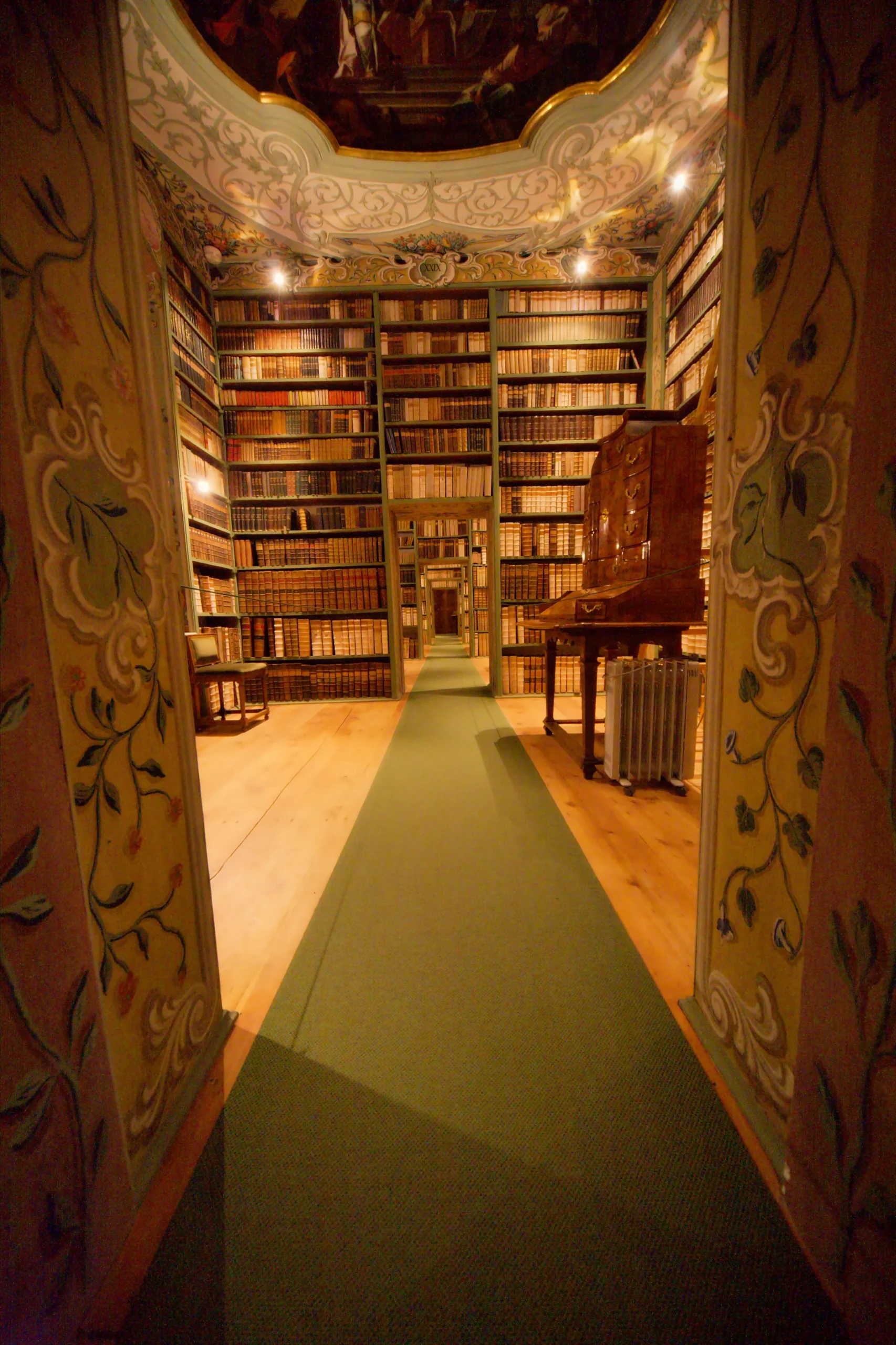
Founded in 696, St. Peter’s Abbey in Salzburg is the oldest monastery in the German-speaking area. St. Peter’s abbey church, St. Peter’s cemetery, Austria’s oldest library, the oldest restaurant in central Europe and many other highlights among Salzburg’s sights are all found here. Fans of “The Sound of Music” will recognize the cemetery and its catacombs from the movie. In addition, fans of Mozart can look forward to musical and culinary pleasures at the Mozart Dinner Concerts hosted at St. Peter’s.
Austria’s Oldest Library
St Peter’s houses the oldest library in Austria. Among the 800 manuscripts the most precious is the Verbrüderungsbuch, which was deposited in 784 by Bishop Virgil. Through continual acquisition, the library has grown to 100,000 volumes, focusing particularly on Benedictine monasticism, medieval church history, history of art, and items relating to the local history of Salzburg, or Salisburgensia. Special collections include incunabula and early editions, graphics including the devotional images collection of Father Gregor Reitlechner and the map collection.
In 1768, Abbot Beda Seeauer had the medieval Zellenbibliothek converted to the Rococo style. In 1999, it was restored. It is accessible by special permission.
Achieve
The archive serves the dual purpose of abbey administration and historical research, encompassing a broad range of documents from the 8th to the 20th centuries. Its collections include approximately 4,300 deeds dating up to 1700 and are organized into several series. Manuscripts Series A features chronicles, journals, chapter minutes, visitations, endowments, necrologies and rolls, inventories, accounts, and other related documents. Manuscripts Series B contains official records of estate ownership, such as cartularies, registers, feodaries, and court records. Additionally, the Files series includes records and correspondence pertaining to the abbots, monks, chancery, and other administrative offices, as well as files related to estate ownership. The Other category encompasses photographs, maps, and plans.
Music Achieve
As a result of contact with notable musicians of Salzburg, St Peter’s possesses a significant collection, much of it in holograph, with works by Johann Ernst Eberlin, Anton Cajetan Adlgasser, Leopold and Wolfgang Amadeus Mozart, Joseph Haydn, Sigismund von Neukomm, Robert Führer, and Karl Santner.
Reconstruction of the basilica began in 1919, directed by the Historical Monuments Commission. Emile Brunet was charged with reconstruction. As a first step about 3,000 cubic metres (110,000 cu ft) of cut stone and rubble were cleared by German prisoners of war. Some further damage was caused to carvings and decorations in the process. Specialized workers undertook urgent reinforcements of masonry, and parts of damaged sculptures were stored for later restoration. A temporary roof was built to protect the structure from weather, covered by fibro-cement and Ruberoid sheeting.
It took 25 years to complete the basic restoration. The surviving 13th-century stained glass windows were reinstalled in 1948, with modern windows made by Hector de Pétigny (1904–92) to replace those that were missing, The restored basilica was reopened for worship in 1956. The steeple over the transept crossing was only finished in 1983. Further restoration work was undertaken in 2006 to clean the walls and restore the gatehouse to its state at the end of the 17th century.
Museum : More than 1300 Years of Monastic History

The valuable art treasures collected by the Archabbey of St. Peter and exhibited in the Long Gallery and the Museum depict the history of the oldest monastery in the German-language region.
Since its founding, or rather renewal by Bishop Rupert in 696 AD, St. Peter’s looks back with unbroken continuity and is considered the oldest monastery in the German-speaking region still in existence today.
As in most monastic collections, the medieval church treasure forms the basis of the collections at St. Peter’s. The religious lifestyle of a monastery and the celebration of the sacred liturgy required certain implements (vasa sacra) and textiles (paraments) which were kept in the sacristy and later in the treasure chamber. The most important collections of the Archabbey include not only the church treasure, but also a collection of paintings, large holdings of prints, coins, arts and crafts, minerals, musical instruments and many other artefacts.
St. Peter’s Museum, located in the so-called “Wallis Tract” of the old archiepiscopal Residence (the former Court Arcade Building), presents a selection of the most beautiful objects: for example the so-called “St. Rupert’s Pastoral Staff” (an abbot’s crosier from the 11th or 12th century), a chalice from the 12th century and an especially well-preserved chasuble cross from the 15th century. Then there are the objects that form the pride of the collection acquired by Abbot Rupert V. Keutzl around 1480: a mitre richly set with precious stones, an equally artfully decorated pastoral staff and a matching clasp for a liturgical vestment.
Architecture of St. Peter's Abbey Salzburg, Austria
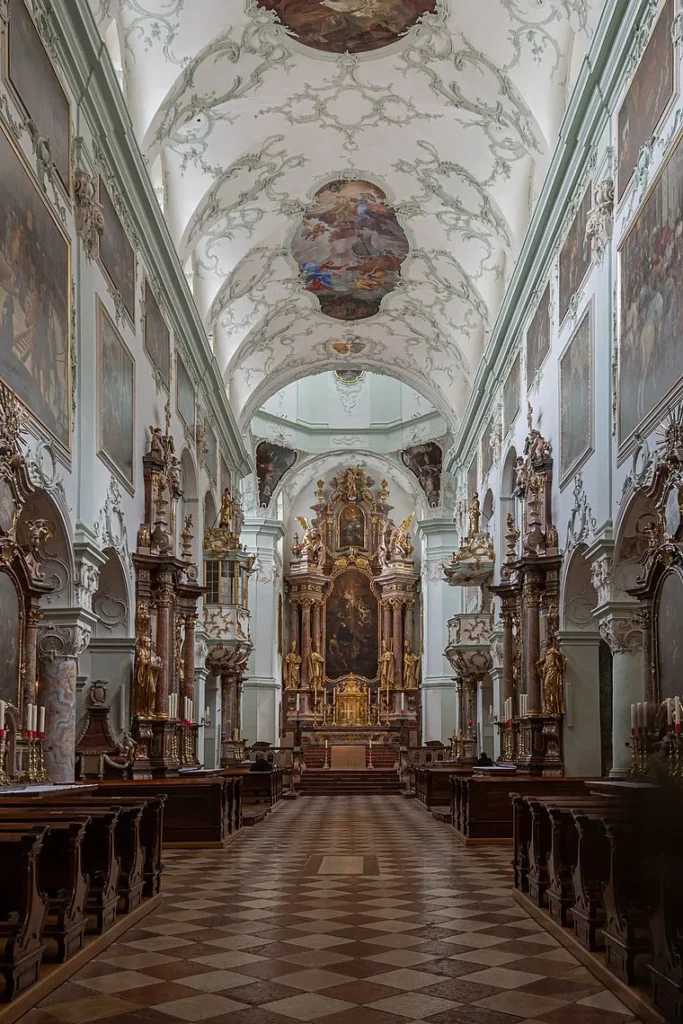
Architectural Style : Romanesque Architecture
The abbey also owns collections of paintings, church treasures, artworks, minerals, furniture, musical instruments, a coin cabinet, and a cabinet of natural curiosities.
Since St. Peter’s was founded in the 7th century, the church and abbey have been the spiritual heart of the city of Salzburg. It is set at the foot of the Mönchsberg mountains and built in the Romanesque style of architecture in 1130. It is built at the site of a previous Carolingian church building, and was dedicated to Saint Peter in 1147. Onion domes are very popular in Austria and really fascinate me. The onion dome on the steeple was added in 8th century.
The interior was often re-modelled before attaining its currently visible late Baroque style between 1760 and 1782 under Abbot Beda Seeauer’s direction. The high altar is a work by Martin Johann Schmidt. Mozart’s Great Mass in C minor was scheduled to premiere in the church, probably on 26 October 1783, with his wife Constanze singing first soprano. However, the work remained incomplete.
Next to the altar where St. Rupert was originally entombed lie the tombs of Mozart’s sister Maria Anna Mozart (Nannerl) and Johann Michael Haydn. Also entombed at St. Peter’s Abbey is St. Vitalis.
Salzburg Cathedral first existed as an 8th-century Romanesque building, but this building burned down twice in 1127 and 1167. An even larger Romanesque building was later erected, becoming the largest church north of the Alps, but the building also burned down in 1598 and was finally demolished in 1606. The present Baroque building was constructed between 1614 and 1628, during the Thirty Years’ War. In October 1944, the cathedral dome collapsed during an air raid on Salzburg. From 1945 to 1959, the cathedral was renovated and the dome rebuilt. The building is now a UNESCO World Heritage Site together with the historic city centre of Salzburg.
Long Gallery
The former painting gallery of the Prince-Archbishops, the Long Gallery, built between 1657 and 1661 under Guidobald Count Thun and transferred to the Archabbey of St. Peter’s in 1819, shows large-scale paintings from the Abbey’s collections, which were intended mainly for religious contemplation and created for various rooms of the Monastery.
Cemetery
The Petersfriedhof was probably laid out during the foundation of the monastery about 700. The burial ground was first mentioned under the rule of Archbishop Conrad I in 1139, with the oldest preserved graves from 1288 and 1300. It is centred around Late Gothic St Margaret’s Chapel and the Chapel of the Cross, dedicated about 1170 and refurbished as a mausoleum according to plans by Santino Solari in 1614/15. Several tombs are located in arcades built at the foot of the Festungsberg hill.
The cemetery grounds are known for its ‘catacombs’ carved out of the conglomerate rocks of the Festungsberg. They probably date back to Late Antiquity, when they served as an Early Christian place of assembly and hermitage. They include two chapels dedicated to Saint Gertrude and one Christian martyr Maximus by Archbishop Conrad of Wittelsbach in 1172 and 1178.
Events
The Romanesque Hall at St. Peter’s Abbey served as a dining hall for the monks in the Middle Ages. Because of its atmospheric ambience, today the hall is often venue for concerts and events.
Mozart Dinner Concerts are hosted at the Baroque Hall at St. Peter Stiftskulinarium restaurant. Travel back to 1790 for a historic evening and enjoy a concert and dinner how it might have taken place during Mozart’s time. Listen to famous arias and duets from Mozart’s operas “The Magic Flute”, “Don Giovanni” and others, between the courses of the Mozart menu. Opera singers and an ensemble of musicians perform live during the dinner concert. The abbey church has also been a venue during the Salzburg Festival several times.
Feast Day
Feast day : 29th June
The Feast of Saints Peter or Solemnity of Saints Peter is a liturgical celebration honoring the martyrdom of the apostle Saint Peter in Rome. It is observed on June 29.
Church Mass Timing
Vigil and Lauds : 6.45 am
Mass : 10.15 am
Midday prayer : 11.45 am
Rosary : 5.00 pm
Chorale vespers : 6.00 pm
Compline : 7.45 pm
Church Opening Time:
Weekdays : 8.00 am–12.00 pm, 12:30–6:30 pm
Weekend : Closed
Contact Info
Address:
Sankt-Peter-Bezirk 1, 5020 Salzburg, Austria
Phone : +43 662 844576
Fax : +43 662 844576-80
Accommodations
Connectivities
Airway
Salzburg Airport (SZG), Austria to St. Peter’s Abbey distance 5.4 km(23 mins).
Railway
Salzburg Hbf to St. Peter’s Abbey distance 3.6 km (15mins).

